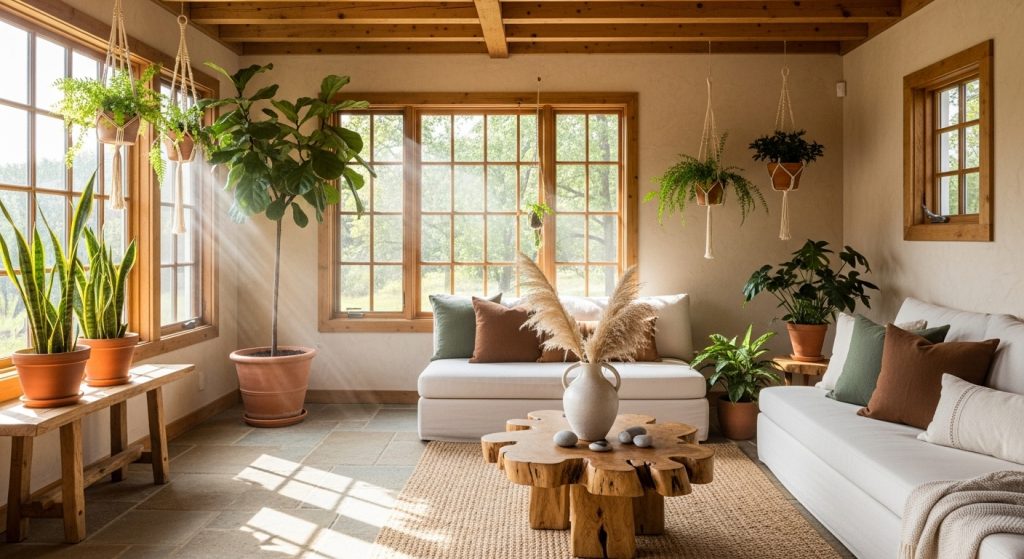Imagine walking into a home that feels calm, fresh, and connected to nature. Sunlight fills the room, plants thrive in every corner, and everything — from the furniture to the fabrics — tells a story of care for the planet. That’s the essence of an Eco Friendly Home Interior.
You don’t need to rebuild your home to live sustainably. It’s about making small, smart choices that reduce waste, save energy, and bring nature closer. When your home supports the environment, it also nurtures your well-being. This philosophy perfectly aligns with interior trends that promote natural, affordable materials — especially designs that draw inspiration from bamboo to create a calm, eco-friendly atmosphere.
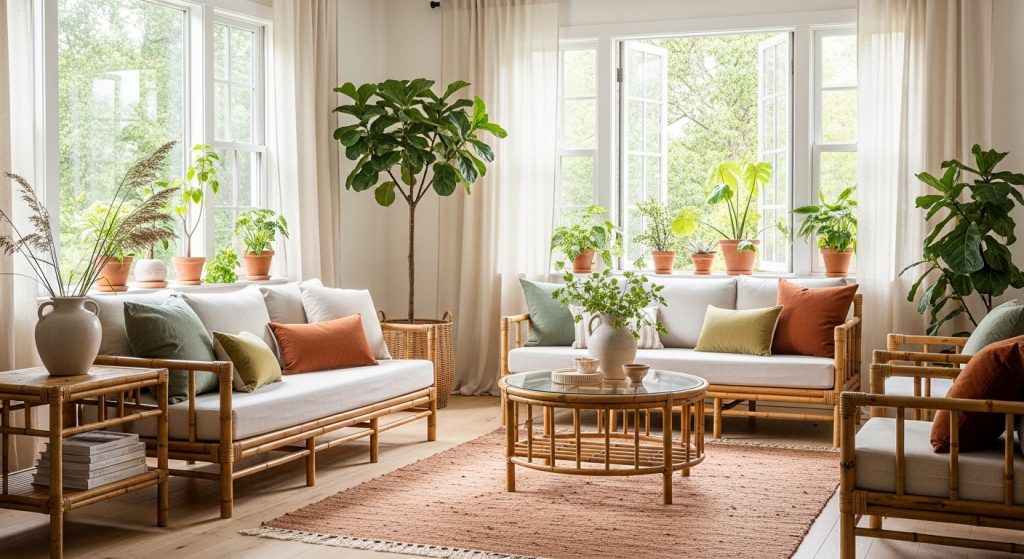
Understanding the Essence of Eco Friendly Home Interior
A truly Eco Friendly Home Interior starts with intention. It’s not just about using green products — it’s about adopting a lifestyle that values sustainability. Choose materials that last long, consume less energy, and leave a smaller carbon footprint.
As The New York Times Home section explains, eco-conscious living focuses on reducing waste and choosing renewable resources. Think bamboo flooring, organic cotton, recycled wood, and low-VOC paints — all key elements of an Eco Friendly Home Interior that promote sustainability without sacrificing style.
When you surround yourself with natural textures and earthy colors, you create balance — a harmony that benefits both you and the planet.
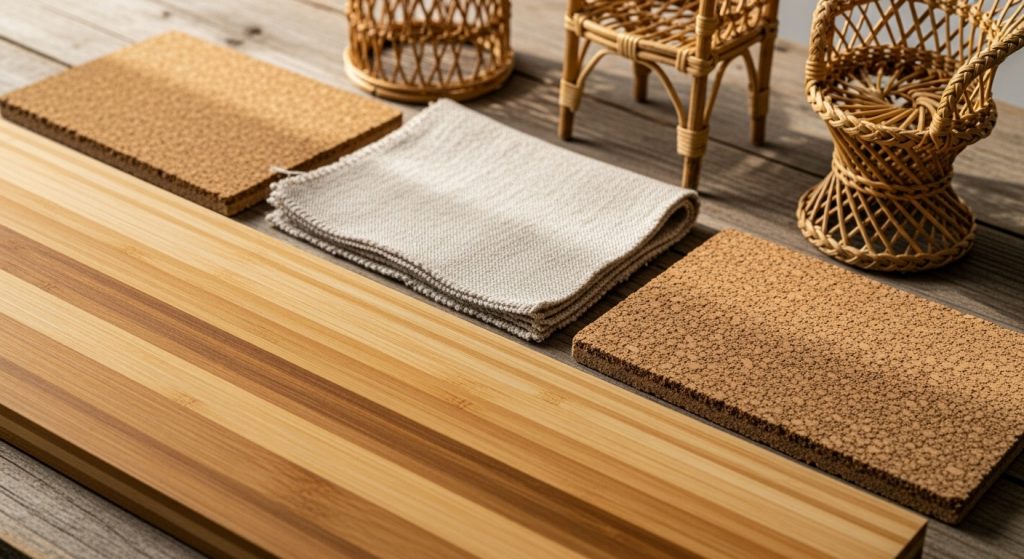
Choosing Sustainable Materials for Every Space
Sustainable materials are the backbone of eco-conscious interiors. Opt for wood from responsibly managed forests, bamboo, or reclaimed timber. Use jute, hemp, or linen for upholstery and curtains. These materials not only look beautiful but also breathe better, keeping your home naturally cool — an essential aspect of an Eco Friendly Home Interior that balances style with sustainability.
According to Architectural Digest, natural fibers age gracefully and reduce indoor toxins. Pair them with clay, stone, and recycled glass accents to create timeless appeal.
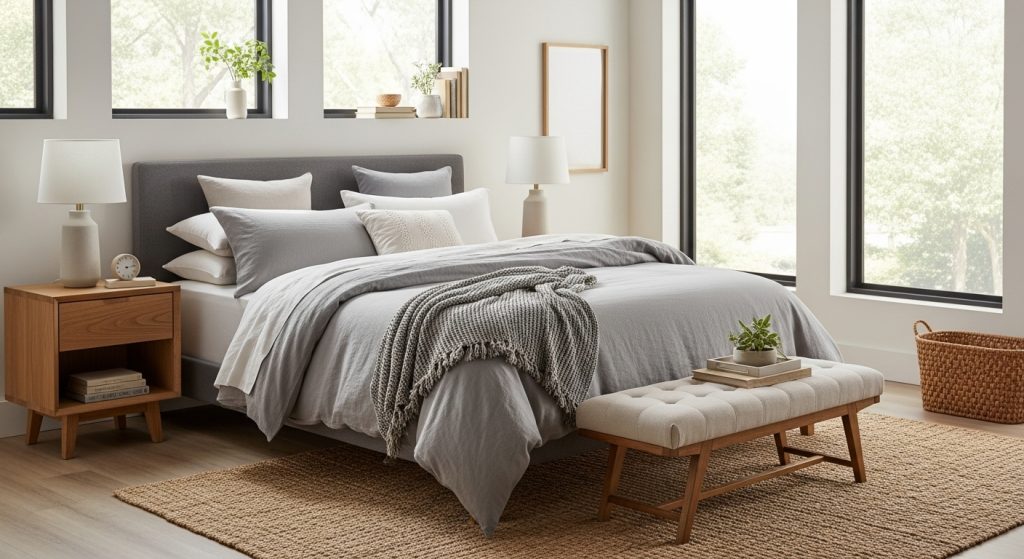
Energy Efficiency — Design That Saves the Planet
Design choices can directly impact your home’s energy use. Start with natural light — it reduces electricity needs and boosts mood. Use mirrors to reflect light and make rooms brighter.
Switch to LED bulbs and smart thermostats for long-term energy savings. Add thick curtains or bamboo blinds to maintain room temperature naturally. Energy Star reports that these small steps can cut your utility bills by up to 30%.
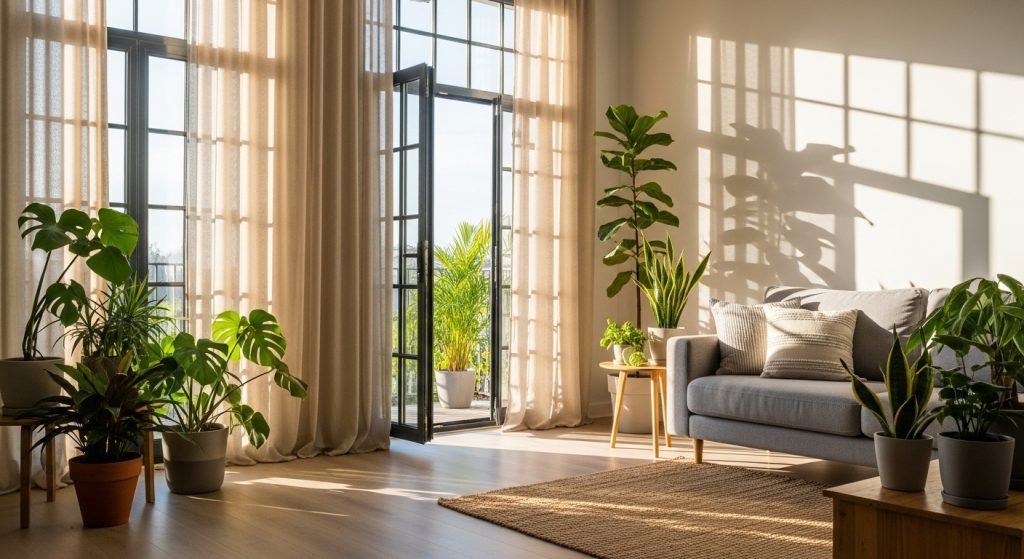
Upcycling and Repurposing — The Creative Side of Sustainability
You don’t always need new furniture. Instead, transform what you already have. Turn old ladders into bookshelves or repaint an outdated table with non-toxic paint. Upcycling is both creative and environmentally responsible.
Better Homes & Gardens highlights that repurposing not only saves money but also keeps waste out of landfills. A vintage trunk can become a coffee table; glass jars can turn into plant holders or lanterns.
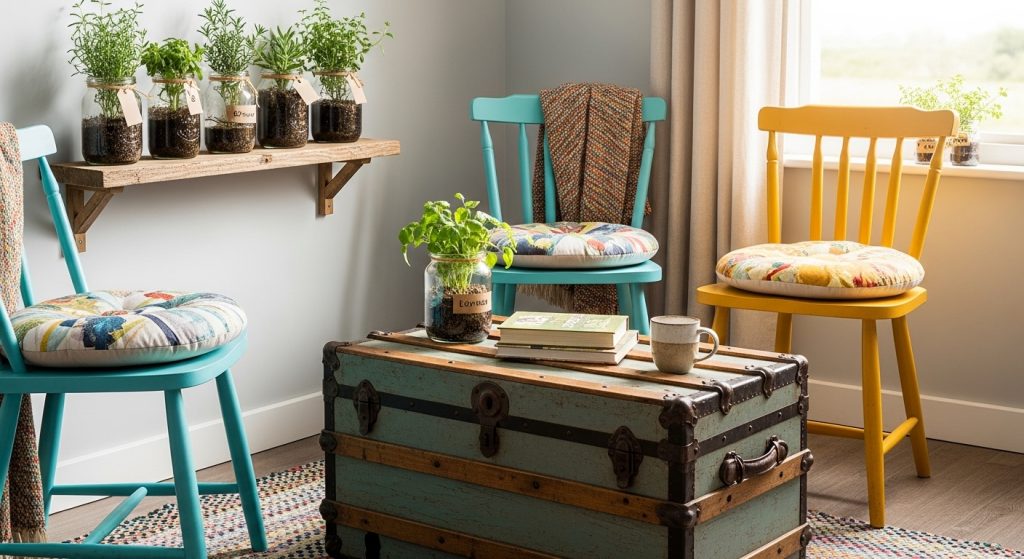
Bringing Nature Indoors
Plants are nature’s best decor. They purify the air, add life to your rooms, and reduce stress. Choose low-maintenance options like snake plants, pothos, and peace lilies.
Arrange them in woven baskets or ceramic pots made from natural clay. Add vertical gardens in smaller spaces. NASA’s Clean Air Study confirms that indoor plants help remove toxins and improve air quality.
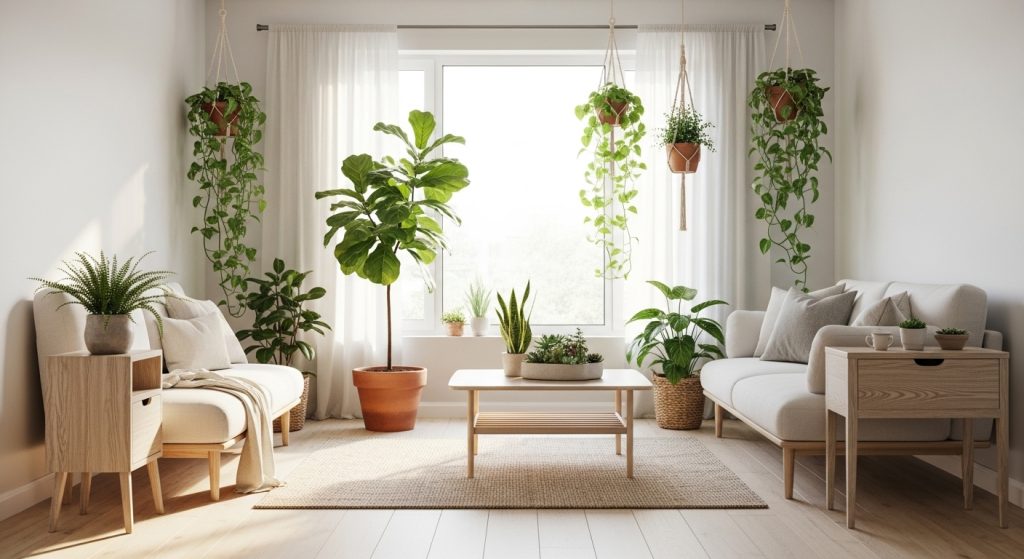
Non-Toxic Paints and Natural Finishes
Most paints release chemicals that harm air quality. Instead, go for low-VOC or plant-based paints. Limewash and clay-based finishes give a rustic look while keeping your walls breathable and fresh.
According to The Environmental Protection Agency (EPA), indoor air can be more polluted than outdoor air due to toxic finishes. Choosing eco-safe options makes your home healthier for everyone.
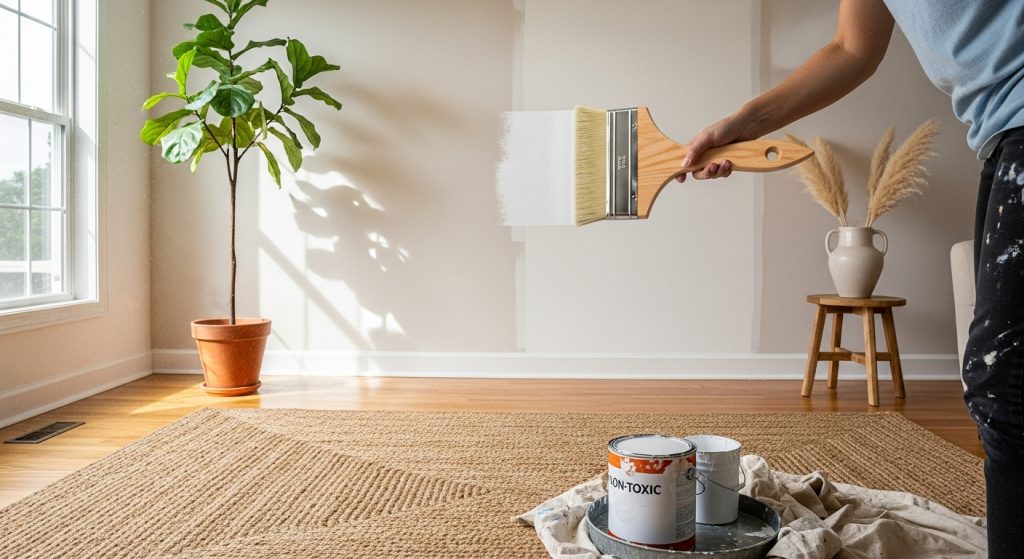
Minimalism — The Heart of Sustainable Living
Sustainability isn’t only about materials; it’s about mindset. Owning fewer, better things leads to less waste and more peace.
Keep only what adds function or joy. Marie Kondo’s philosophy aligns perfectly with eco design — intentional simplicity creates emotional clarity. Every object in your space should have a purpose.
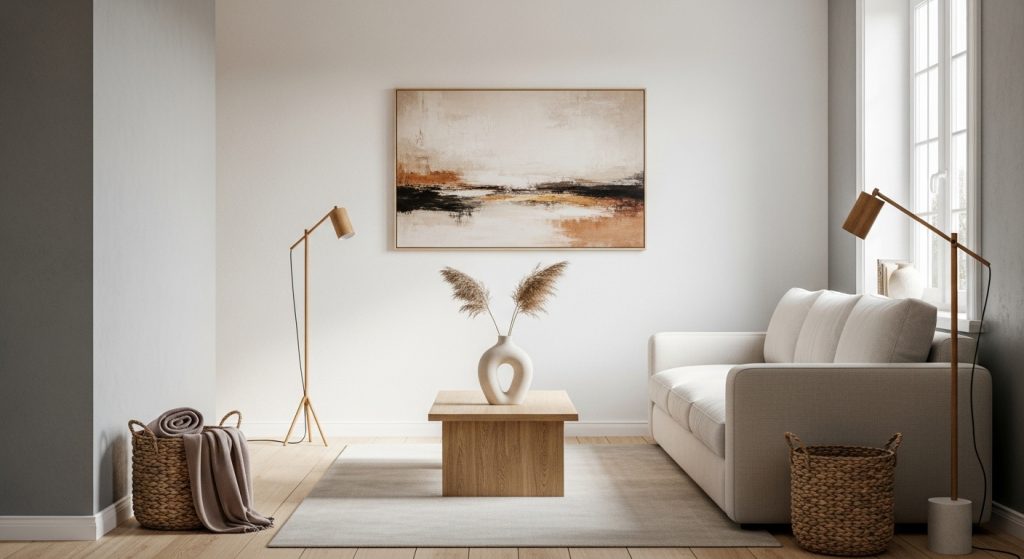
Water and Waste Management at Home
Sustainability extends beyond decor. Install low-flow faucets and dual-flush toilets to save water. Compost organic waste or create a mini herb garden from kitchen scraps.
National Geographic suggests that simple daily habits like reducing water use and recycling significantly lower your household’s carbon footprint.
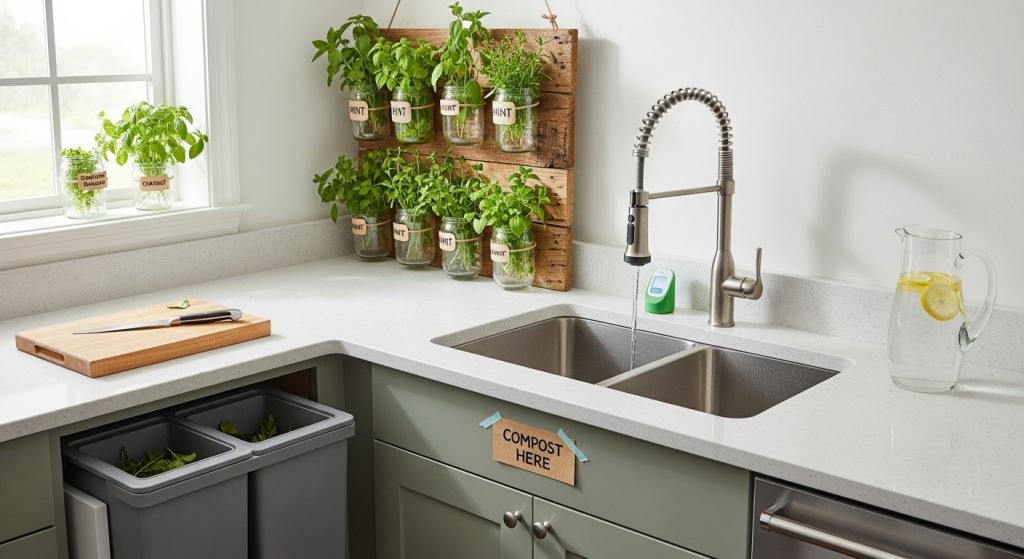
Eco-Friendly Lighting and Decor Choices
Lighting can transform your mood and energy use. Choose LED bulbs with warm tones for soft, natural light. Candles made from soy or beeswax add coziness without releasing harmful fumes.
For decor, prefer handmade crafts, woven baskets, and pottery made by local artisans. Supporting local craftsmanship reduces transport emissions and promotes community sustainability.
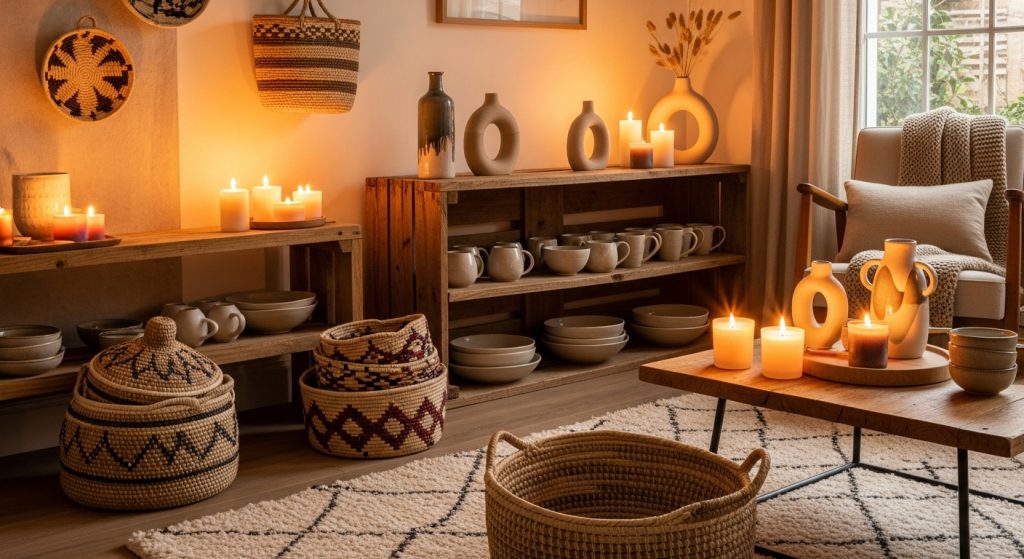
Conclusion: Living Beautifully, Consciously, and Naturally
Sustainable living isn’t about perfection — it’s about progress. Each eco-friendly choice you make ripples outward, protecting the planet and enriching your life.
When your home reflects care, respect, and love for nature, it becomes more than just a space — it becomes a story of conscious living.
